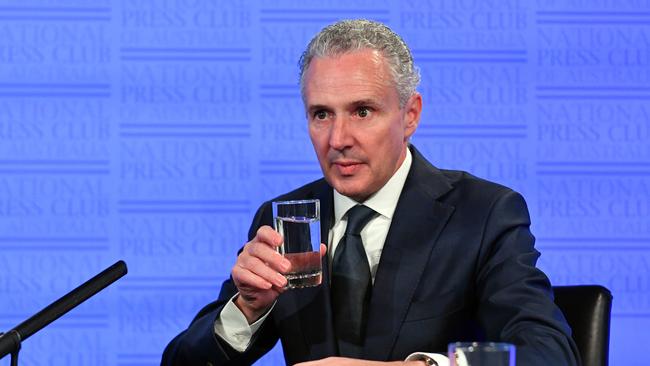
The increase came in a year in which financial metrics were uniformly negative, but progress on the company’s restructuring plan, which included big staff lay-offs, increased.
Earnings before interest tax and depreciation fell by 22 per cent to $8 billion on a 2.6 per cent fall in revenue to, $27.8 billion. Since the 2014 full-year, earnings have fallen by 28 per cent on a 6 per cent increase in revenue.
Return on equity has fallen from 25 to 17 per cent and return on capital from 13.4 to 9.7 per cent.
Staff numbers which stood at 29,769 at June 30 are down from 34,115 in 2017.
Penn, who had 1.38 million Telstra shares at year-end, also sold 300,000 shares during the year picking up another $1.1 million in cash based on today’s stock price, which in lunchtime trade was down 1.4 per cent in a weak market at $3.88 a share.
Meanwhile Telstra’s total dividends paid have fallen from $3.2 billion (or 22c a share) a year ago to $2.3 billion (16c a share). That’s against earnings per share of 18.1c, down from 30.2c a year ago.
Other executives to sell stock included former chief counsel and new NBN recruit Will Irving who sold 350,000 shares, leaving him with 691,265 shares. Infrastructure boss Brendon Riley sold 262,403 shares, leaving him with 834,368.
While Telstra has received over $9 billion in NBN payments since 2011, Penn — as expected — blamed the NBN for much of its increased costs, for the simple reason that the NBN robbed Telstra of a monopoly fixed line business.
The NBN rollout is due to be completed next year. Once customer migration payments cease, Telstra will continue to receive $1 billion a year in rental payments on its ducts and other services.
Penn noted today by lending its equipment, Telstra was saving the NBN money.
Telstra controls 49 per cent of all customers on the NBN and rivals would like to earn the same windfalls as Telstra.
The company is forecasting a better year this year and reports some signs of life from businesses, capitalising on Telstra’s superior network. Another good sign was “internet of things” revenue, which was up 19 per cent for 2019. But at $203 million, it doesn’t move the dial at Telstra. Health services revenue wasn’t broken out.
Penn noted that 70 per cent of all traffic on his network was media-related, so he remains committed to his 35 per cent stake in Foxtel.




Telstra’s profit fell by 40 per cent last year but chief executive Andy Penn was rewarded with a 33.6 per cent increase in actual pay received, to $4.9 million.